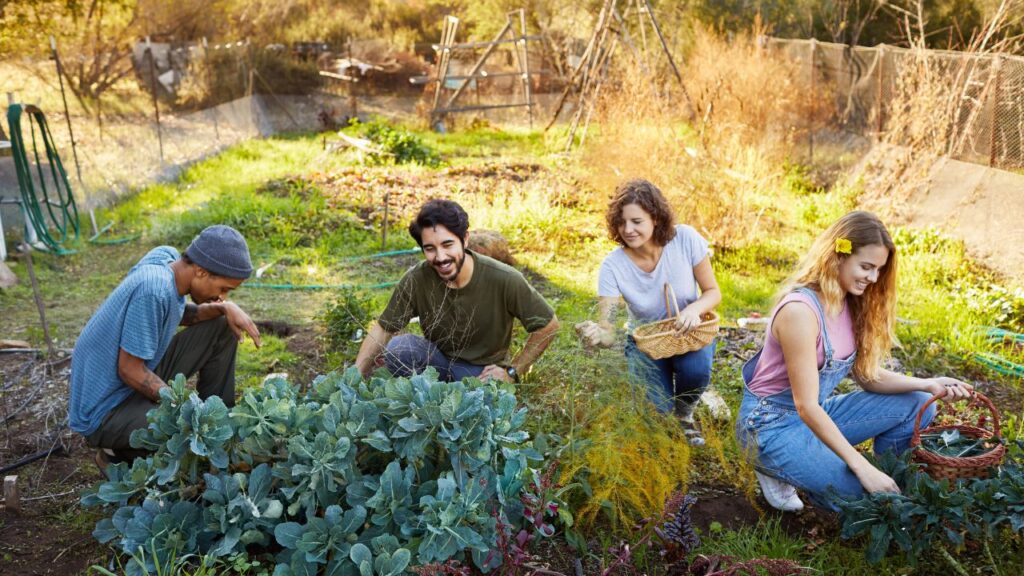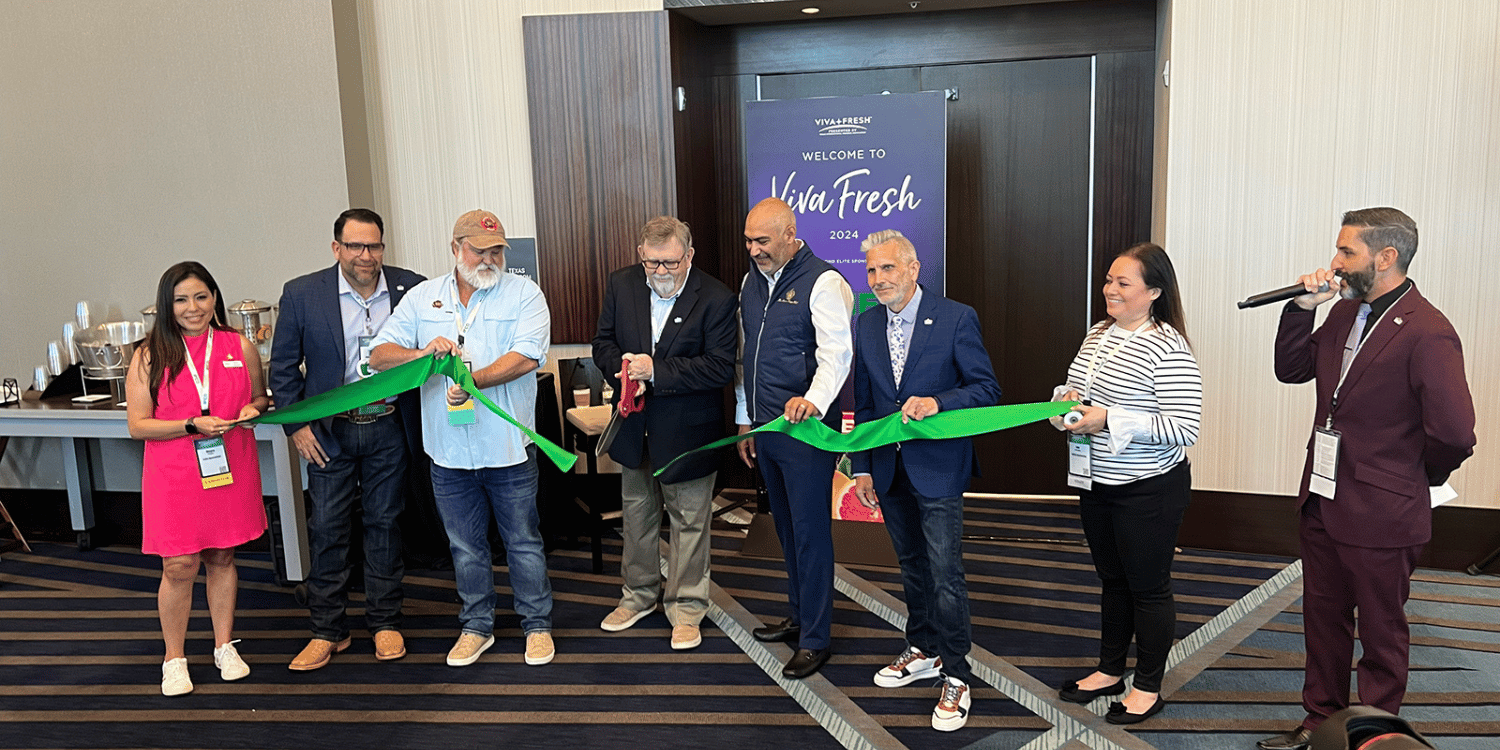Agriculture plays a pivotal role in the development of communities worldwide.
Especially, when it turns towards practices rooted in sustainability and local engagement.
Community Supported Agriculture (CSA) is such an endeavor, enhancing both the local economy and food security.
Getting deeper into its operational mechanisms, CSA necessitates the participation of citizens who act as shareholders in local farms.
In return for their patronage, these shareholders receive shares of the farm’s produce throughout the harvesting season.
This piece sets off with an examination of important aspects to be considered when partaking in or establishing a CSA system.
- Selection of varied, seasonal, and sustainable crops is crucial.
- Trust-building with community members is a key focus.
- Undertaking regular market analysis is essential for constant demand.
- Consistent communication on crop availability is required.
- Investment in eco-friendly farming methods is a prime concern.
The role of a Community Supported Agriculture program has multiple dimensions, thus our exploration doesn’t stop at these five key takeaways.
In the upcoming sections, we will continue to provide insights into other related factors essential for the successful operation of such programs.
For instance, we will talk about the balancing act between low-input farming methods and quality yield, as well as the importance of collaborations in the industry.
By continuing, you’ll gain a comprehensive understanding of the topic, better preparing you to engage with Community Supported Agriculture initiatives.
Key Considerations For Community Supported Agriculture
1. Selection of Diverse, Seasonal and Sustainable Crops
In Short: In Community Supported Agriculture (CSA), strategic selection of diverse, seasonal, and sustainable crops is vital for long-term success and food security. Such practices encourage biodiversity, harmonize with local ecosystem, mitigate farming risks, and reinforce the ethos of consuming locally produced food.
One of the pivotal aspects in the functioning of Community Supported Agriculture (CSA) revolves around the strategic selection of diverse, seasonal, and sustainable crops.
This selection process is of utmost importance because it directly impacts the overall success of the CSA program.
Communities that engage in CSA hugely depend on the diversity of the crops being cultivated.
It essentially means CSA farmers need to plant a variety of crops to ensure that there is a consistent supply of fresh produce all year round.
An array of crops also increases the likelihood of the farm’s survival as the failure of one crop does not imply the failure of the entire operation.
Furthermore, adhering to seasonal crops supports the ecosystem and encourages diversity while lessening the risk of pest infestations and diseases.
This agricultural practice fosters a harmonious relationship with nature, as seasonal crops tend to be in sync with the climate, soil conditions, and local fauna.
It must be noted that the this selection must not only be diverse and seasonal, but sustainable as well.
Sustainable farming practices protect the environment, public health, human communities, and animal welfare.
These practices involve growing a variety of crops in the same area to ensure natural biodiversity.
Let’s consider some key attributes of sustainable crops:
- Sustainability: They are grown in ways that are environmentally friendly and mindful of future generations.
- Diversity: They include various types of crops to improve soil health and reduce vulnerability to pests.
- Seasonal suitability: They are grown during their appropriate seasons in harmony with natural climatic conditions.
A well-thought-out selection of diverse, seasonal, and sustainable crops can help to build food security within the community participating in the CSA.
Moreover, strategically selected crops strongly resonate with the notion of eating local which emphasizes the consumption of food that is locally produced, not moved long distances to market.
It’s important to remember that how we farm and what we grow has a significant impact on the environment and our communities.
Hence, the selection of diverse, seasonal, and sustainable crops plays an integral role in shaping the long-term success of a community-supported agriculture initiative.
It’s an ongoing process, requiring a continual reassessment to serve the community and the environment better.
Pro Tip: The strategic selection of diverse, seasonal, and sustainable crops directly impacts the overall success of Community Supported Agriculture (CSA) programs, fostering food security, supporting local consumption, and significantly impacting the environment and communities.
Understanding that a selection process is not a one-size-fits-all scheme, but a dynamic process that must be tailored to specific local conditions and community needs, is crucial.
2. Building Strong, Trusted Relationships with Members
In Short: Community Supported Agriculture (CSA) flourishes on robust, loyal relationships with shareholders, nurtured through transparency, regular communication, engagement, education, and value addition. The success of the CSA model depends on trust-building, a shared commitment to sustainable farming practices and fostering a vibrant community where shareholders participate beyond just transactions, shaping it as a unique community-oriented approach to support sustainable agriculture.
Community Supported Agriculture (CSA) has gained considerable traction in recent years, but its success hinges on cultivating robust, trusted relationships with members, often referred to as shareholders. The foundation for longevity in CSA is laid by nurture.
Crucial to any fruitful relationship is communication. It is fundamental to keep shareholders apprised regularly about what is happening on the farm but also exceed their expectations. This involves providing them with regular updates on crop availability, planting schedules, and any potential issues that could affect output.
The value of trust in these relationships should not be underestimated. Shareholders are investing not only their finances into the CSA but also their faith in the farmer’s ability to deliver. Trust is nurtured and fostered over time through transparency, reliability, and a demonstrated commitment to organic, eco-friendly farming practices.
The commitment to these practices plays a important role in building loyalty and confidence among the shareholders. Showing that the farm is invested in methods that are kind to the environment and promoting biodiversity will cultivate strong ties with the community.
Fundamental to nurturing these relationships are the strategies put to use. Here are some key approaches to consider:
- Transparency – Full disclosure on farming practices and any potential issues that could impact the crop yield.
- Engagement – Offering farm visits, workshops, and CSA member events can foster a sense of community and ownership.
- Education – Sharing knowledge about the crops being grown, their nutritional benefits, and even recipe ideas can enhance the value perceived by shareholders.
- Regular Communication – Regular updates keep shareholders involved and informed, assuring them of the goings-on at the farm.
- Value Addition – Providing additional benefits such as discount coupons, loyalty points, or special access to new crops can add more value to the membership.
The outcome of these strategies should not only be judged from an economic or business perspective. The relationships built, the community fostered, and the bonds nurtured will be the enduring result of these efforts.
In the CSA model, farmers and shareholders share the risks and rewards of farming. This shared involvement creates a unique bond of trust and cooperation. It underscores the importance of continual dialogue, transparency and mutual respect.
It is interesting to note that these CSA relationships often extend beyond mere transactional interactions. Many shareholders take profound interest in the functioning of the farm, often volunteering for harvesting, participating in weeding, or bringing their kids for farm visits. This high degree of engagement demarcates CSA from other forms of buying food and makes it a unique, community-oriented method of supporting sustainable agriculture.
Pro Tip: Building a successful Community Supported Agriculture (CSA) model involves fostering a vibrant community of committed shareholders and hinges on nurturing strong, trusted relationships, consistent communication, transparency about farming practices and potential issues, engaging shareholders through farm visits and events, educating them about the crops, and remaining sensitive to their needs and preferences.
Equally important is the farmer’s ability to remain sensitive to the needs and wants of the shareholders. They are the backbone of CSA, after all. A farmer who listens to shareholders about their preferred share sizes, crop preferences, pickup schedules, and different ways to connect with the farm is setting the stage for a fruitful, long-lasting relationship.
In all aspects, working in a CSA model is as much about growing and distributing quality, sustainable crops as it is about fostering a vibrant community of committed shareholders. This community is cultivated on the basis of strong, trusted relationships, earned through transparency, communication, engagement, and an unwavering commitment to sustainable agriculture.
3. Market Analysis to Ensure Ongoing Demand
In Short: Understanding and meeting the dynamic needs of the community is pivotal for a successful community supported agriculture (CSA). Through continuous market analysis, focusing on demographic, consumption habits, competition, and pricing, you can ensure ongoing demand, turn potential challenges into opportunities, and drive thriving growth in your CSA business.
Market analysis for community supported agriculture (CSA) primarily revolves around understanding and meeting the dynamic demands of the community.
In the context of CSA, it is essential to have a lucid comprehension of the local market scene and the evolving needs of the people.
This requires CSA operators not only to research and plan according to the current situation but also to build adaptable strategies for possible market shifts.
A crucial initial step in this process is identifying your target demographic within the community.
Once identified, align your offerings to their preferences and needs, factoring in local dietary trends, cultural preferences, and seasonal changes.
Developing competitive pricing strategies in comparison to local grocery stores and other sources is another key factor.
Investing in market research can also provide a better understanding of community purchasing habits and actual consumption patterns.
This would also involve keeping a close watch on how the market trends are shifting and to predict how they might evolve in the future.
Now let’s take a look at a list illustrating some potential elements to consider in a market analysis for a CSA:
- Demographics: Get a sense of your community’s population, age distribution, income levels, and other key traits.
- Consumption habits: Understand the daily, weekly or monthly food consumption patterns of local households.
- Competition: Determine who else is growing what you plan on growing; you may want to diversify crops to avoid direct competition.
- Pricing: Make sure your prices are competitive, but also sufficient to cover your costs and yield a reasonable profit.
Gathering and analyzing such data would help CSA businesses to plan effectively and convert potential challenges into positive opportunities.
The ultimate goal is to ensure ongoing demand and transcend the notion of mere survival in the market into the realm of thriving growth.
Market analysis is not a one-time task, but an ongoing process, providing valuable guidance for everyday decision-making and long-term strategic planning.
Pro Tip: Investing in market research is crucial for community supported agriculture (CSA) as it helps understand the dynamic demands of the community, identifies target demographics, and enables the development of adaptable strategies considering local dietary trends, cultural preferences, and market shifts, thereby ensuring ongoing demand and sustainable growth.
Lastly, carrying out an effective market analysis can contribute towards making CSA a sustainable and profitable venture, favoured and supported by the local community.
This would foster a healthy, self-sustaining loop where the community benefits from fresh, local produce, and the agriculture sector enjoys consistent demand and support.
4. Regular Communication Regarding Crop Availability
In Short: Regular and frequent communication about crop availability is crucial in community supported agriculture (CSA); it keeps members informed, aids dietary planning, and builds trust. Communication methods can range from newsletters to mobile alerts, while the content should cover crop estimates, harvest updates and emergencies.
In community supported agriculture (CSA), open and recurring communication regarding crop availability plays a important role.
This not only keeps the members informed but also helps them in planning their dietary needs and meal preparations.
The frequency of communication often depends upon the nature of the farming operation and the individual preferences of members.
However, it is generally good practice to communicate at least once per week during the peak growing season.
In the era of digital communication, there is an array of channels through which one can communicate efficiently and promptly.
Regular newsletters, website updates, mobile alerts- all can be effective tools to disseminate information.
Online tools have the added benefit of being convenient, saving resources and allowing the farming community to handle emergencies quickly and effectively.
Let’s consider some of the key elements that should be included in these communications:
- Crop estimates: Providing an estimate of what crops will be available in the coming week encourages members to plan and look forward to their share.
- Harvest updates: A regular update on harvest status keeps members connected to the farm, fostering a sense of involvement and community.
- Emergencies: In case of unforeseen circumstances like bad weather or pest infestation, update members immediately to keep them informed and mitigate any potential disappointments or misunderstandings.
In addition to keeping members informed about the availability of the crops, regular communication also offers a platform to educate them about the processes involved in sustainable farming.
Members appreciate gaining insight into how their food is grown.
This can stimulate their interest in the CSA model, fostering a mindset of community responsibility and sustainable eating.
Moreover, farmers can seize this opportunity to forges a sense of trust and confidence between themselves and the members.
By sharing the successes as well as the hardships encountered in the farming process, members can acquire a better understanding of what it truly means to engage in sustainable agriculture.
Engaging the community in this way can also encourage more people to join the CSA, further supporting local farming.
Overall, regular communication regarding crop availability is a powerful tool that strengthens the relationship between the farmer and the community, keeping everyone abreast of the farm’s proceedings, and building a strong and sustainable CSA model.
5. Investment in eco-friendly farming practices
In Short: Investment in eco-friendly farming practices within Community Supported Agriculture (CSA) significantly contributes to long-term sustainability as well as overall community health. Techniques such as cover cropping, crop rotation, integrated pest management, and organic fertilizers enrich soil fertility, improve biodiversity, reduce carbon emissions, and enhance food quality, fostering resilient food production systems for future generations.
In the context of Community Supported Agriculture (CSA), the investment in eco-friendly farming practices takes on a pivotal role.
Sustainability is not just a buzzword but is integral to ensuring the long-term health of the farming operation and therefore, the community it supports.
Adhering to environmentally friendly farming strategies can provide both immediate and long-term benefits.
Initially, these practices can help in maintaining a sustainable community by preserving local biodiversity.
The utilization of organic compost, for example, can enhance soil health while reducing reliance on synthetic fertilizers.
Additionally, crop rotation strategies not only prevent the overuse of certain nutrients in the soil but also aid in pest management.
Adopting these practices is not a decision to be taken lightly as it involves significant time, effort, and potentially higher costs in the short term.
Yet, it’s important to understand the wider benefits which include better soil fertility, improved biodiversity, and reduced carbon emissions.
All these practices combined, in turn, contribute to more resilient farming systems, ensuring the community-supported agriculture model can sustain future food production.
Let’s take a moment to breakdown a few key sustainable practices that should be incorporated into CSA farming systems:
- Cover cropping: This practice not only conserves soil moisture but also prevents soil erosion and suppresses weeds.
- Crop rotation: As previously mentioned, this is an effective way to break pest and disease cycles while maintaining nutrient balance in the soil.
- Integrated pest management: This method focuses on managing pests rather than completely eliminating them. It involves a variety of strategies such as biological controls and careful use of pesticides.
- Organic fertilizers: Composting and other organic matter can improve soil health and fertility.
Incorporating these eco-friendly strategies not only improves the overall health of the CSA system but also enhances the quality of food produced.
Furthermore, farmers who practice such ecological methods provide their members with an opportunity to contribute to sustainable living, thus boosting their sense of participation and fulfillment.
It is also necessary to remember that each CSA setup might have varying needs based on the local geographical and climatic conditions.
Therefore, while the aforementioned practices are generally advisable, there may be the requirement for additional tailored practices that suit the specific needs of your farming area.
In essence, the investment in eco-friendly farming practices goes beyond just monetary aspects.
It’s about making a commitment to responsible stewardship of the land you farm and providing quality, sustainable produce to the community who support your efforts.
This investment not only enhances the prosperity of the farming operation but also contributes significantly toward a healthier planet for future generations.
The Bottom Line
Community Supported Agriculture is a significant approach that fosters a strong connection between consumers and their food sources. It not only encourages healthier eating habits but also supports local agriculture and promotes environmental sustainability. However, successful implementation requires careful planning, appropriate resources, and active community involvement. At the end of the day, CSA is more than just a commerce model; it represents a commitment to digging our hands in the soil of sustainable living and nurturing our communities, one harvest at a time.




















